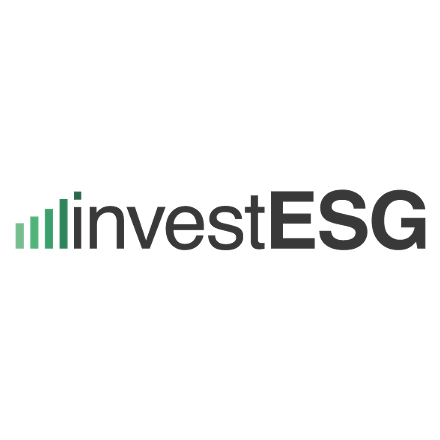Before diving into what's new, it's worth giving a recap on an intense year.


Photo credit: © Photocredit DPAM
Ophelie Mortier, Chief Sustainable Investment Officer von DPAM
Sustainability regulations in 2024 marked a significant milestone for sustainable finance, although their full impact is still unfolding.
First, 2024 was the inaugural reporting period under the EU’s Corporate Sustainability Reporting Directive (CSRD), based on European Sustainability Reporting Standards (ESRS), alongside the global expansion of corporate sustainability standards through the International Sustainability Standards Board framework. These initiatives aim to harmonise sustainability reporting and provide investors with more reliable and comparable data.
Second, the European Securities and Markets Authority’s (ESMA) naming guidelines were implemented; these aim to reduce greenwashing by restricting the use of ESG-related terms unless specific criteria are met.
Third, 2024 saw two major consultations regarding the Sustainable Finance Disclosure Regulation (SFDR), which is set to be revamped by the European Commission in 2025.
In mid-December, the European Platform on Sustainable Finance (PSF) released its long-awaited ‘Categorisation of products under the SFDR’ report. We previously highlighted the main points in our regulatory update, but to summarise, the PSF supports a categorisation scheme for sustainability strategies with these categories:
- Sustainable: Investments aligned with the EU Taxonomy, or Sustainable Investments (newly defined) free of harmful activities;
- Transition: Investments aiding the shift to a net-zero, sustainable economy;
- ESG Collection: Investments excluding harmful activities, focusing on improved environmental or social criteria;
- Unclassified: All other products.
Each category should have clear criteria, objectives, and measurable KPIs, with mandatory sustainability performance disclosures. The PSF also suggests the European Commission develop a common understanding of impact investing and align MiFID/Insurance Distribution Directive (IDD) sustainability preferences with these categories for easier identification by investors and advisors.
Lastly, Ursula von der Leyen announced an omnibus regulation regarding the CSRD, the Corporate Sustainability Due Diligence Directive (CSDDD), and the Taxonomy.
The ‘Omnibus Simplification Package’ is set for provisional discussion on February 26, 2025, alongside the ‘Clean Industrial Deal’. French Commissioner Stéphane Séjourné, the Executive Vice-President for Prosperity and Industrial Strategy, will present the Omnibus package. The planning is ‘indicative’ and subject to change at the President's discretion.
This is the first time the term ‘omnibus’ appears in an official EU document, indicating revisions to the CSRD, CSDDD, and Taxonomy regulations. Assigning responsibility to Stéphane Séjourné, who oversees industrial policy and the recovery of European industry, suggests a potential move towards simplifying these regulations.
The re-elected Chairman of the European Commission is focusing on two main priorities: restoring EU competitiveness and reducing administrative burdens. Aligned with the latter, Germany has requested a two-year postponement of the EU’s CSRD reporting requirements and exemptions for small and medium-sized firms.
The European Commission is well aware of the complexity of the regulations it has generated in recent years. It notably published an FAQ on the EU Taxonomy Climate Delegated Act on November 29, 2024. This FAQ aims to simplify the use of the EU Taxonomy and provides detailed clarifications on several technical topics. It addresses scope issues related to climate risk and clarifies whether specific activities fall within a Taxonomy category. The FAQ also discusses the interoperability of the EU Taxonomy with the ESRS and the CSRD, particularly regarding the Do No Significant Harm (DNSH) criteria. The European Commission clarifies that while ESRS data is useful for assessing compliance with the DNSH criteria, a reference to ESRS alone is insufficient, as ESRS provides methodologies but no specific performance thresholds.
Additionally, the FAQ highlights that the EU Taxonomy works in tandem with NACE codes, noting that references to NACE codes are indicative and do not override specific activity descriptions in the Act. It specifies the required frequency of third-party verification for certain activities, such as annual verification for energy activities related to fossil gaseous fuels. For activities where third-party verification is required without a specific frequency, verification should occur whenever there is a material change in information.
The FAQ covers reporting on DNSH criteria related to climate adaptation, pollution prevention and control, and biodiversity and ecosystem protection. It emphasises the use of precise terminologies to avoid subjectivity in determining alignment.
In summary, the FAQ reflects the European Commission's intention to make the taxonomy more user-friendly and to reduce the administrative burden on companies. This approach aligns with recent ‘streamlining’ efforts, such as the Omnibus Package, which aims to amend and simplify the CSRD, CSDDD, and taxonomy legislation. The FAQ also indicates that interoperability between the taxonomy and the CSRD is currently limited, suggesting potential areas for revision in the upcoming Omnibus Package.
The upcoming year promises to be intensive.
As mentioned above, the European Commission is well aware of the complexity and weaknesses of their regulatory overzealousness related to sustainability.
Sector-specific ESRS and the scope of the CSRD, including the potential inclusion of SMEs, might therefore be modified. For the CSDDD, amendments could target civil liability and the scope of due diligence for financial activities. There might also be delays in the publication of thematic and sector guidelines.
These recent initiatives and demands are part of a broader reconsideration of sustainability regulations, which have proliferated in recent years, and which reveal their limitations in terms of operability and complexity. The new commission intends to carefully review Draghi's critical report. The report identifies three key priorities for European politicians in the coming years:
- Closing the innovation gap with the US and China.
- Reducing high energy prices while continuing efforts to decarbonise and transition to a circular economy.
- Addressing geopolitical instability, where dependence on others becomes a vulnerability, and Europe must ensure its own security.
Additionally, it suggests that the Green Deal will likely be streamlined to focus on its industrial aspects, transforming into a ‘Clean Industrial Deal’ under the von de Leyen Commission II. This new deal aims to balance sustainability, competitiveness and (re)industrialisation.
Moreover, it should not be forgotten that initiatives continue to emerge worldwide, further complicating interoperability and cross-border operations due to the fragmentation of sustainability frameworks. The UK rolled out its Sustainability Disclosure Requirements (SDR), setting the stage for what is arguably the most ambitious global framework for fund labelling to date. Several markets in Asia, along with countries like Canada, Australia, and Switzerland, are advancing their own sustainability frameworks. Additionally, the EU’s forthcoming Green Bond Standard and the extension of the CSRD’s scope to non-EU companies, in 2028, will raise the bar for global firms.
Definitively, 2025 will not be a quieter year in terms of regulatory follow up!
Published by
 investESG
investESG
 investESG
investESG

